This post may contain references or links to products from one or more partners of our parent company and/or subsidiaries of our parent company. For more information, visit this page.
Updated October 2, 2023
Luxurious. Warm. Timeless. Oh yes, my friend: we’re talking hardwood floors. And we’re gonna get into the nitty-gritty of all the wood flooring types you need to know about. Because everyone loves a wood floor. Everyone.
But—we also know that everyone also has an opinion when it comes to wood floors (engineered! solid! oak! walnut!). And with more and more types of flooring appearing on the market all the time, it’s getting harder and harder to figure out what’s what.
That’s why we’ve put together this easy-to-understand guide to all your wood flooring options. We’ll talk engineered wood vs. solid wood; we’ll talk wood species; we’ll talk hardness levels (aka the Janka scale); we’ll talk finishes; we’ll even talk about saw patterns.
👉 👉 If you are simply looking for the best hardwood flooring brands, we recommend going with Proximity Mills or Doma. However if you are looking for luxury, we recommend going with Paradiso.
Basically, we’re going to walk you through everything you’ll need to choose the right types of wood flooring for you. Don’t worry—you can thank us later.
PS: after reviewing 100+ different brands, there was a very clear top 3 best hardwood flooring brands.
Part I: Solid Wood vs. Engineered Wood Flooring
When it comes to choosing hardwood floors, you’ve got two main categories to consider: solid wood and engineered wood.
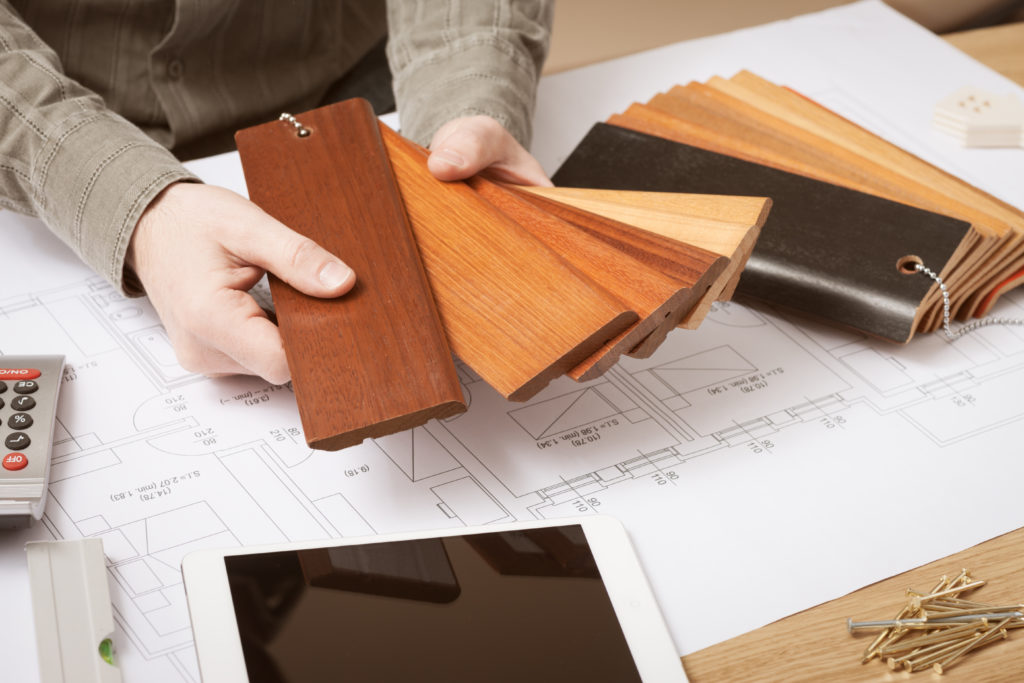
What’s the difference between solid wood and engineered wood?
While solid wood flooring is made from a single piece of wood throughout, engineered wood is composed of a thin strip of solid wood (called the veneer layer) glued over a rigid plywood or high-density fiberboard (HDF) core.
Solid wood usually comes in ¾ inch-thick strips that measure between 1½ and 2½ inches wide, or in planks that measure between 4 and 8 inches wide.
Engineered wood strips generally measure between ½ and ⅜ of an inch thick—and since it’s less susceptible to warping than solid wood is, you can find it in planks all the way up to 12 inches wide or more.
These days, most of the best hardwood floor brands sell both solid and engineered wood, so you’ve got no shortage of options.
Is solid wood flooring better than engineered wood flooring?
Nope! Each product has its pros and cons. Engineered flooring is occasionally (and mistakenly) referred to as “fake wood flooring”, but there’s nothing fake about it. Solid and engineered are just different types of wood flooring.
Pros and Cons of Solid vs. Engineered Wood Floors
As we mentioned, both solid and engineered wood boast their own pros and cons. We’re going to run through some of the most notable ones to give you a better idea of which one of these wood flooring types is right for you.
Advantages of Solid Wood Flooring
Here are some of the most notable advantages of solid wood flooring.
Solid wood can be refinished again and again
Because they’re made of solid wood all the way through, solid hardwood floors can be sanded and refinished over and over again. Seriously; if you take care of a solid wood floor properly, it can last a lifetime.
Solid wood feels amazing to walk on
Like Marvin Gaye said, there ain’t nothin’ like the real thing. And that’s super true when it comes to solid hardwood floors. While engineered wood is great, solid wood just feels good underfoot, you know?
Of course, almost all types of wood flooring come in both solid and engineered varieties—and these days, most people would have trouble telling the difference. So take that with a grain of salt.
Solid wood offers a ton of customization options
You have tons of options to choose from when you’re picking out a solid wood floor, from the species (aka the tree it comes from), to the cut pattern, even to the way it’s finished. We’ll talk about all of that further down.
That doesn’t mean engineered wood isn’t versatile. It is! But there are fewer choices for personalization—especially when it comes to cut patterns.
Disadvantages of Solid Wood Flooring
With the good comes the bad. Here are a few disadvantages of solid wood flooring.
Solid wood hates water (and humidity)
Solid wood can be obnoxiously temperamental. Because its grain runs throughout the width of the plank, solid wood is prone to warping and swelling—so it should never be installed anywhere it’s going to come into contact with humidity, moisture, rising damp, or extreme changes in temperature. That includes:
- Kitchens
- Bathrooms
- Basements
- 3-season rooms
- Above underfloor heating systems
- Mudrooms
- Anywhere below ground
There are some water-resistant wood flooring options, but they’re almost all engineered and/or composite products. Very few solid wood floors have water-resistant qualities.
Translation: if you’re looking for mudroom flooring options, we’d recommend going with something like wood-look tile or RevWood, instead.
Some types of wood flooring cost more as solid planks
We’ll talk about pricing further down, but it’s worth noting that some wood flooring types will cost more when they’re purchased as solid planks. This is because solid planks use more “high-quality” (veneer) wood than engineered planks do.
With that in mind, as anyone who’s seen what kids and/or dogs can do to hardwood floors will agree, solid wood may not the best option for super-active homes (though it heavily depends on the wood and finish).
Critters can scuff, scratch, and ding the ever-loving heck out of your innocent wood floors.
And solid wood needs a lot of care
Before you put in a solid wood floor, you need to leave the wood in its future home for at least a few days before installing it.
Wood grains expand or shrink based on the room’s temperature and humidity fluctuations, so if you don’t acclimate the material beforehand, your floor may warp. And that is what we in the business call a “major bummer”.
Plus, solid wood needs extra care even after it’s installed, too. It can’t see too much moisture or humidity, it needs extra cleaning, etc. All in all, it’s definitely the more temperamental option.
Advantages of Engineered Wood Flooring
Now that we’ve talked a bit about the pros and cons of solid hardwood, let’s take a look at the advantages of engineered wood floors.
Engineered wood is less sensitive to changes in temperature and humidity
Like we said, engineered wood is made of a rigid HDF or plywood base covered with a thin veneer of natural wood. This construction makes it less susceptible to changes in temperature and humidity than solid wood.
Translation: lots of the most durable wood flooring choices are made of engineered wood, since it doesn’t warp as easily.
Which means it can go where solid wood can’t
Because engineered wood is less sensitive to environmental changes, it can be installed in places where solid hardwood can’t go (a real game-changer).
Want walnut floors in your kitchen? Engineered wood. Bamboo in your basement? Engineered wood. Rich mahogany in your master bath? You already know it—engineered is the way to go.
Basically, anywhere you can’t put solid wood, you can probably put engineered.
And engineered wood can be cheaper, too
If you want to put in exotic wood floors on a reasonable budget, engineered wood can be a great option. That’s because it uses less of the exotic hardwood species than solid wood does (just that veneer layer, remember?).
So if you’ve been longing for some super-rare ebony flooring, for example, engineered is going to be the cheaper option. (Side note: ebony flooring is super difficult to get and is not the most sustainable wood flooring option out there. You’ve been warned.)
Best Brands of 2024
Disadvantages of Engineered Wood Flooring
Of course, there are some engineered wood disadvantages, too. These are some of the most notable ones.
Engineered wood isn’t waterproof
We’re going to say this again louder for the people in the back. Engineered wood flooring is not waterproof.
Is it a better option than solid wood for kitchens and bathrooms? Yes. Is it a type of flooring you should put in your shower? Definitely not.
If you need something that’s totally waterproof, you’d be better off with a hardwood floor alternative like vinyl plank or laminate. All the best vinyl plank flooring brands offer totally waterproof products. You can also find some totally waterproof hardwood flooring products, but they’re generally hardwood hybrids.
And it can not be refinished indefinitely
More importantly, engineered wood is just as susceptible to scratches, gouges, and dents as solid wood flooring is—after all, the top layer is solid wood.
But because engineered wood only has a thin veneer layer, it can’t be sanded and refinished as many times as solid wood can (and sometimes not at all, depending on the product). Even the best engineered wood flooring options can only be refinished a couple of times at most.
Engineered wood isn’t always the cheaper option
While it can definitely make exotic wood species more affordable, engineered wood isn’t always cheaper than solid. In fact, when it comes to domestic wood flooring types like oak, the price is generally comparable.
Really, it’s all about finding the balance between look and utility. If you have questions about a specific flooring use and want to know if engineered wood is the right call, use this flooring stores near me search to find a local retailer—they’re the real experts.
Installing Solid vs. Engineered Wood Floors
One of the big differences between solid and engineered options is the way in which they can be installed. Here’s what you need to know.
Installing Solid Wood Floors
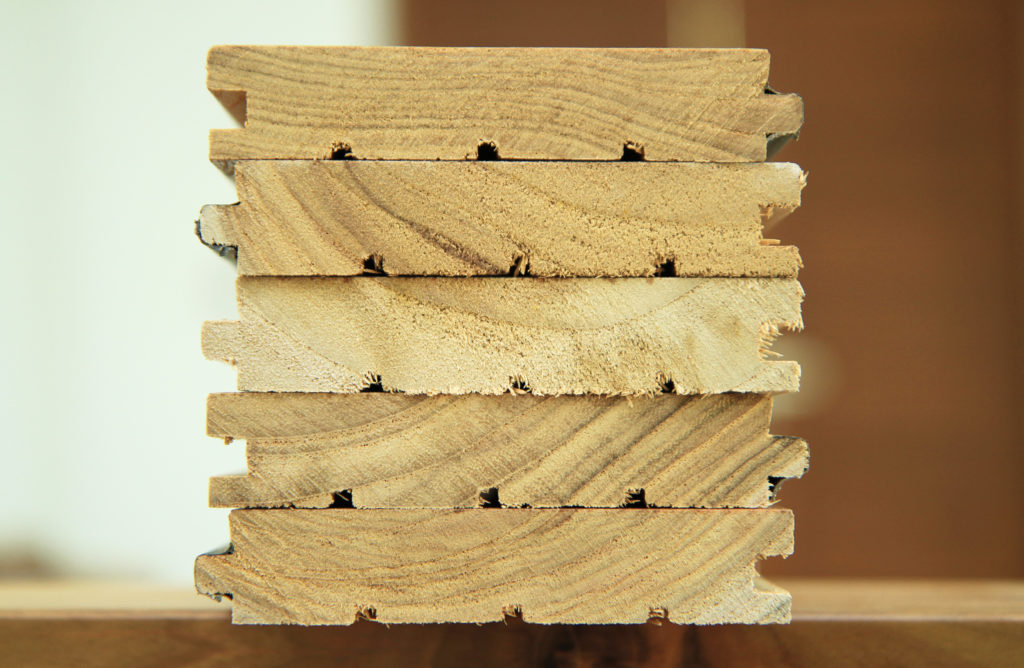
Solid wood flooring usually has to be nailed or stapled to a subfloor, or glued to a specialized underlayment. It is not usually available as a floating floor.
If you’re wondering “what is a floating floor?“, it’s a floor that clicks together and rests on your subfloor, rather than being attached to it. Floating surfaces are some of the easiest flooring to install—and extremely popular these days.
All of that to say: nail-, staple-, or glue-down installs are not projects we’d recommend for the casual DIY-er. Unless you love frustration and anxiety.
Installing Engineered Wood Floors
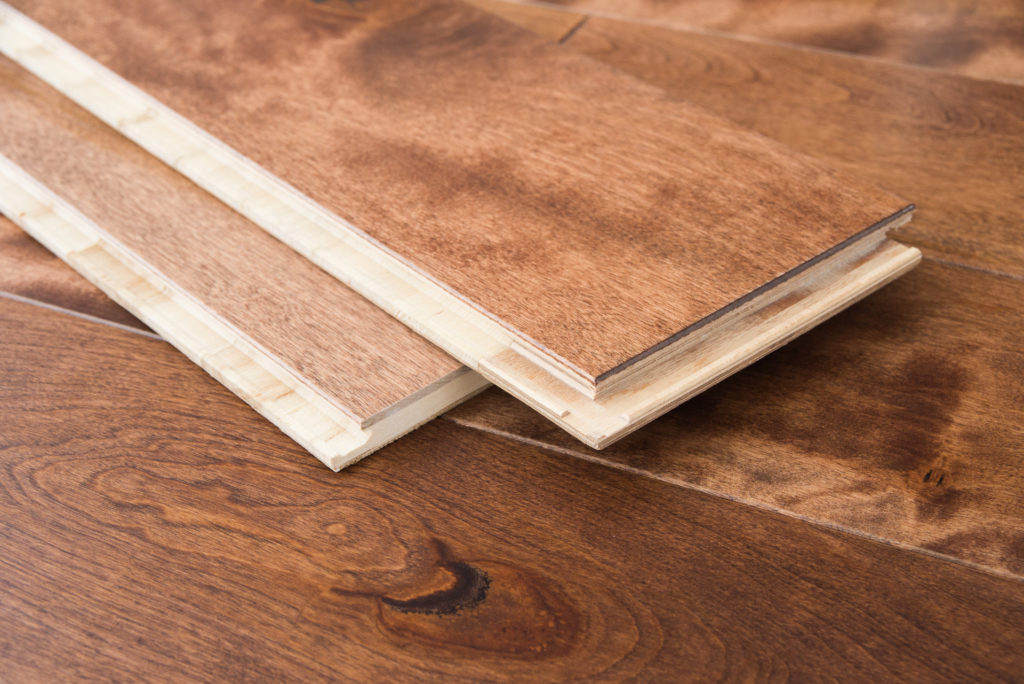
Engineered wood is super versatile when it comes to installation. You can nail or glue it to a subfloor, install it as a floating floor using click-lock planks, or even loose-lay it. Whatever makes you happy.
Pro tip: the cost to install engineered hardwood floors is generally cheaper than the cost to install solid hardwood floors for this exact reason. There are some disadvantages of floating floors, but they’re cheaper and easier to install.
Part II: Wood Species (Types of Wood Flooring)
A wood’s species refers to the type of tree it comes from. The look and feel of a hardwood floor is largely determined by its species, and there are dozens of species to choose from—ranging from domestics like oak and walnut to exotic imports like mahogany and teak.
But before we get into the specifics of your wood flooring options, we need to talk about the Janka scale.
PS: for more information on different types of wood flooring, check out our guide to the 26 best hardwood species for flooring.
The Janka Scale: Measuring the Hardness of Wood Flooring Types
We use something called the Janka scale to measure the hardness of different types of wood flooring. Essentially, it’s the universal guide to a wood floor’s resistance to denting and wear.
Technically speaking, the Janka scale measures pounds of force needed to push a steel ball halfway through a piece of wood. The more pounds of force needed, the harder the wood.
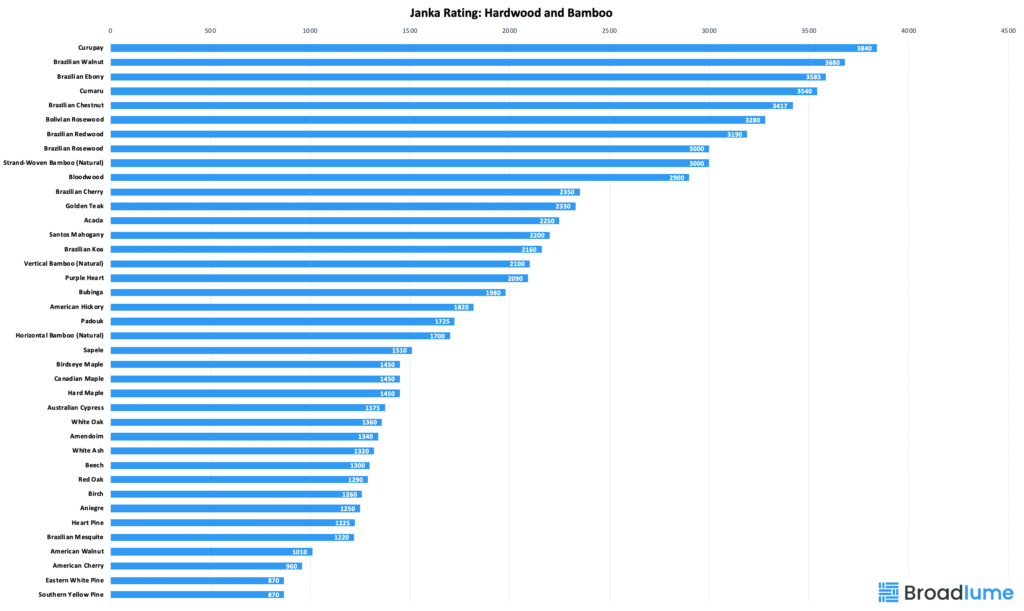
Example: balsa (a super soft wood) has a Janka rating of 70. That means it only takes 70 pounds of force to push a steel ball into it, making it a *horrible* flooring option.
Maple, on the other hand, has a Janka rating of 1450. That means it takes 1,450 pounds of force to do the same thing, making maple an *excellent* flooring option. You can read the USDA’s guidelines to the Janka Scale yourself, but be warned: it’s not a page-turner.
Popular Wood Species to Choose From
Either way, here are some of the most popular wood species for flooring and their Janka ratings.
Oak flooring
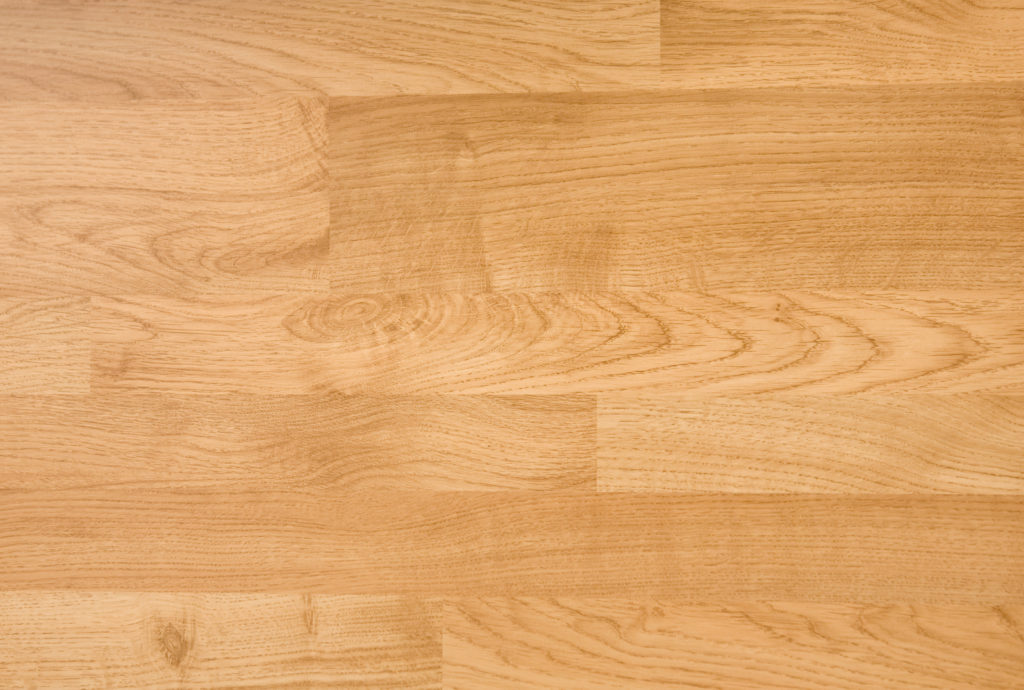
Oak is by far the most popular species for hardwood flooring in the US. Most domestic oak flooring is one of two types: red oak or white oak.
- Red Oak is the warmer of the two. It produces floors with pinkish, red, or rust undertones, and has a good amount of grain variation and character.
- White Oak tends to have cooler, gray-green undertones and a smoother, more uniform grain appearance—but with less character and variation than red oak.
Both are great flooring options, with white oak (1360) scoring just slightly higher than red oak (1290) on the Janka hardness scale.
Ash flooring

If you’re looking for contemporary wood flooring types, you couldn’t do better than opting for some ash flooring. Ash boasts an excellent Janka rating (1320). Plus, its light grain works super well in modern designs. And, it’s known for its ability to take a stain—meaning you can customize it to your liking.
Buyer beware: ash trees are currently facing a destructive Emerald Ash Borer Beetle blight (try saying that 10 times fast). Translation: if eco-friendly flooring is a priority for you, you may want to look into other types of wood floors.
Walnut flooring
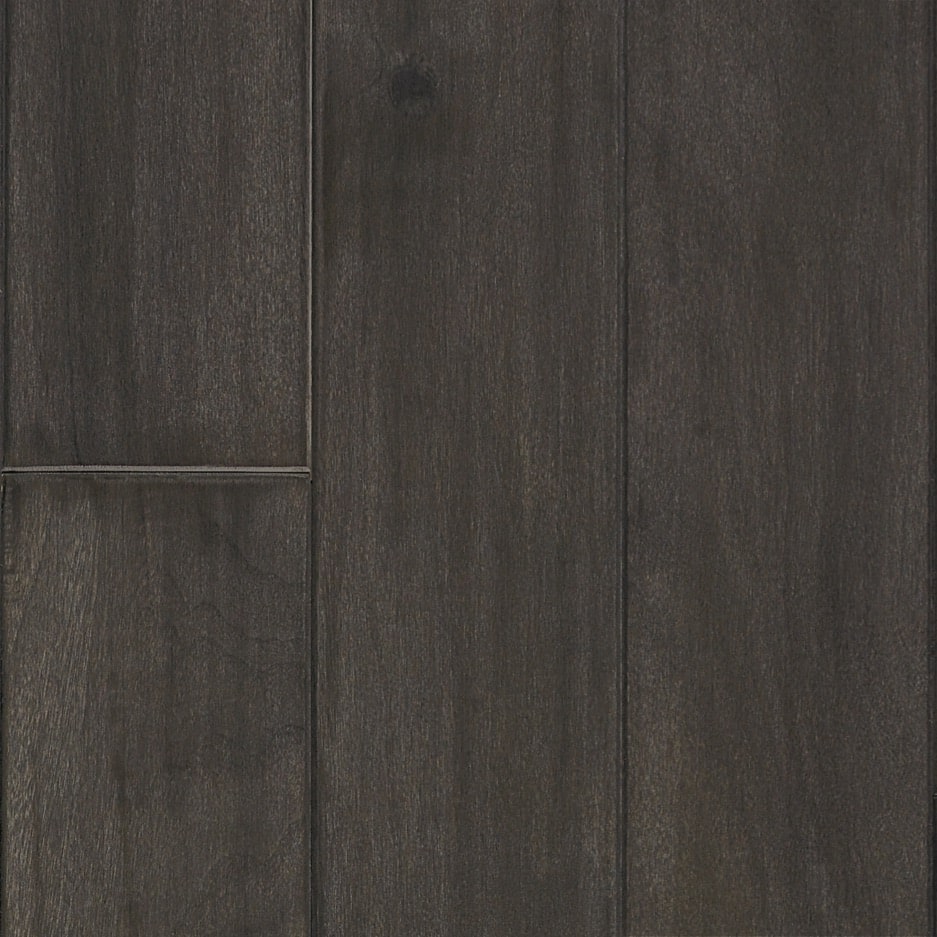
Although it’s one of the softer hardwood flooring options (with a Janka rating of 1010), walnut boasts a rich, chocolate-brown color and beautifully detailed graining. If you’re looking for something that feels luxurious, it’s a great option. Example: if we won the lottery, we’d install walnut floors throughout our massive private estate.
Side note: we’re talking about American walnut here, not Brazilian walnut. While they might look similar, they’re entirely different types of wood flooring (with different pros and cons).
Maple flooring
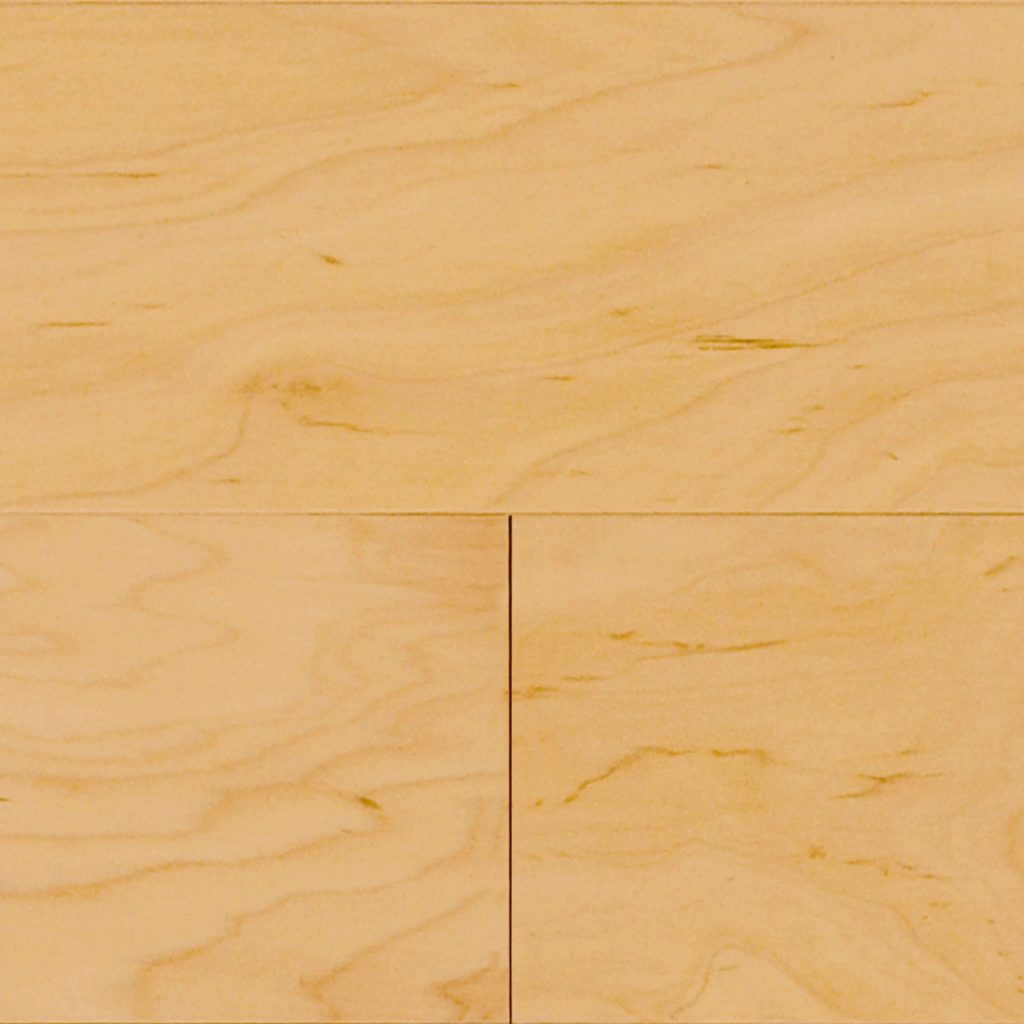
Maple flooring is second only to oak in terms of popularity. Ranging from pale, creamy white to light, reddish-brown, maple floors are beloved for their fine, subdued grain.
Just beware: maple can be difficult to stain (but it does take neutral finishes well). It’s also one of the harder domestic species, with a Janka rating of 1450—so it’s a good hardwood floor for dogs and kids.
Hickory flooring
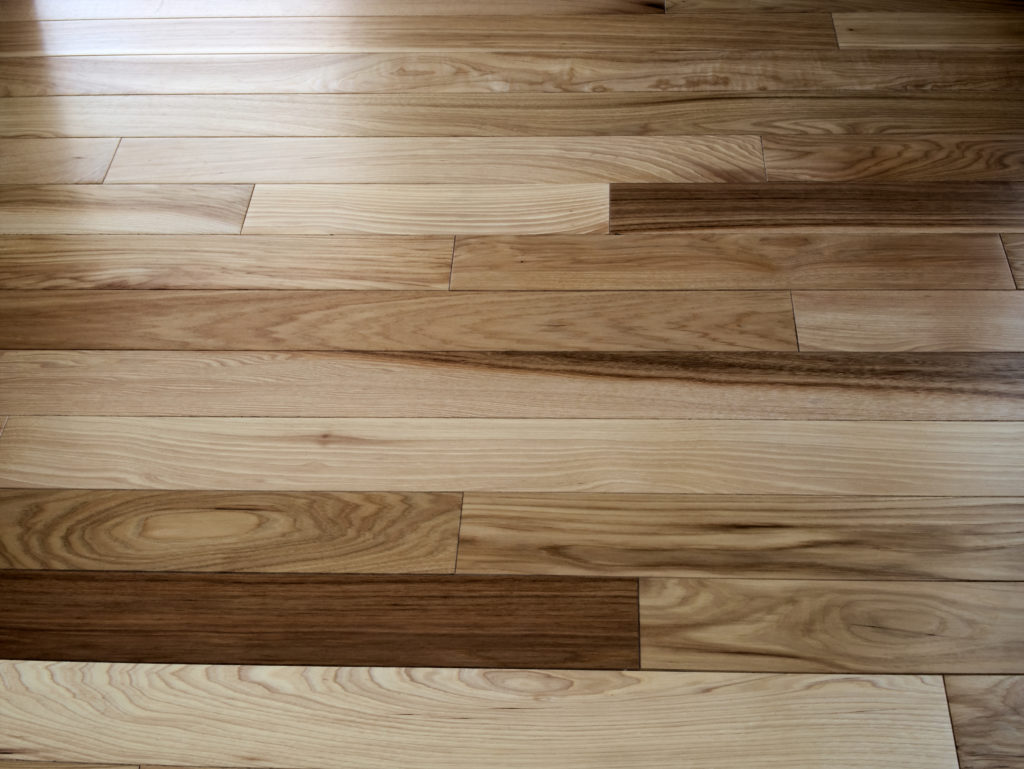
If you’re looking for a hardwood floor with a ton of character—like, a Robin Williams amount of character (RIP)—hickory might be the right flooring choice for you. The grain is complex and varied, so it’s best displayed in long, wide planks. Like oak and maple, hickory scores high on the Janka scale with a rating of 1820.
Side note: hickory flooring is the hardest domestic (aka American-grown) wood species there is. You can read more about the pros and cons of hickory flooring here, but really, most of the disadvantages of hickory flooring boil down to people not loving its look. If you want a hard, USA-grown floor, it’s a fantastic choice.
Mahogany flooring
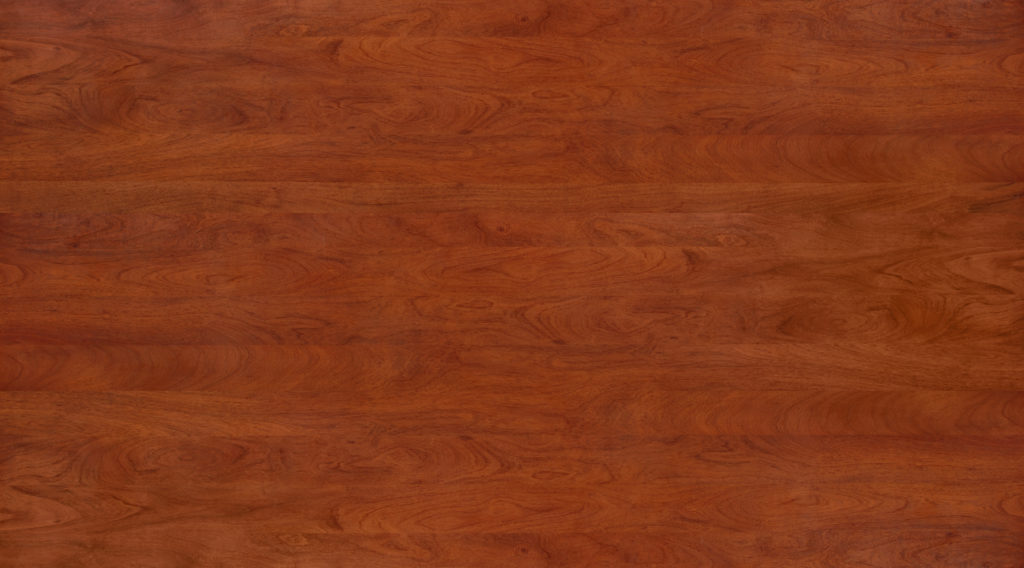
Because it has to be imported, mahogany is considered an “exotic” wood and can be a bit more pricey than its domestic counterparts (mahogany doesn’t grow in the USA).
That said, it’s loved for its warmth, richness, and beautiful wavy grain. If you ask us, mahogany feels like old-fashioned wealth, and beautiful leather chairs, and grandfatherly advice, and… well, you get the idea.
Plus, genuine mahogany (not “Santos Mahogany”) has a ridiculously high Janka rating of 2697. Again, genuine mahogany and Santos mahogany are two distinct types of wood flooring, just like American walnut and Brazilian walnut.
You’ll find a lot of those kinds of marketing gimmicks when you’re shopping for floors. And yes, it’s annoying even for us.
Teak flooring
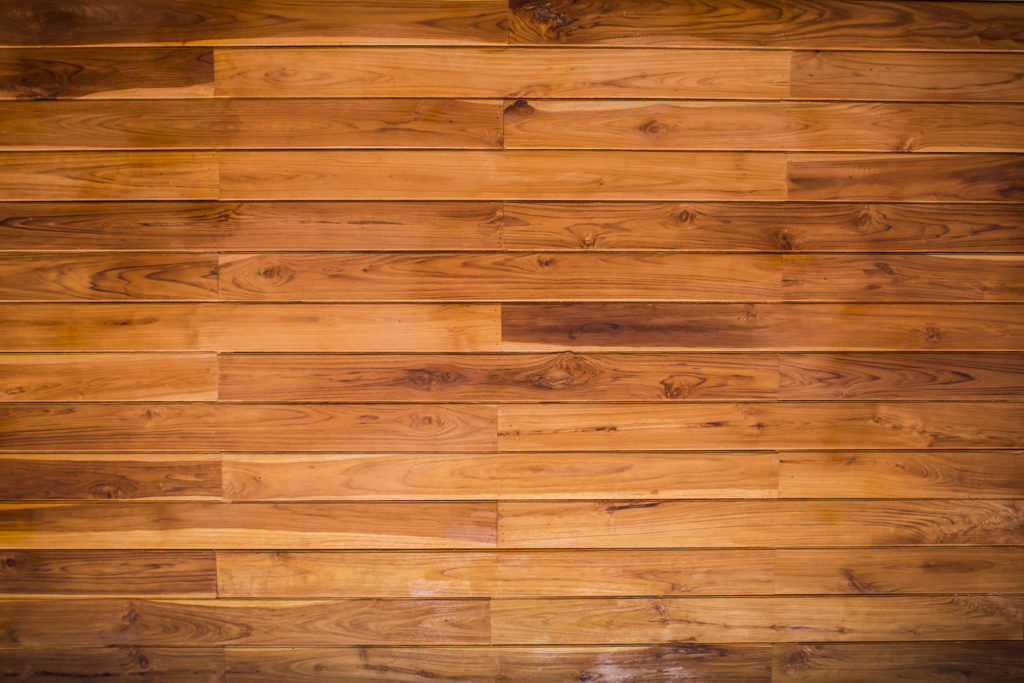
Another exotic wood, teak is full of natural oils that make it shine like crazy—even with minimal finish.
If you take a peek at some teak flooring pros and cons, you’ll find that it can be a bit on the pricey side—but its warmth and radiance make it a perennial favorite. And it has a high Janka rating too (2330), so it’s another good choice for houses with kids or pets.
Just be aware: illegal teak harvesting is causing massive ongoing issues with deforestation, so make sure to only buy teak from a Forest Stewardship Council-certified source.
Pine flooring
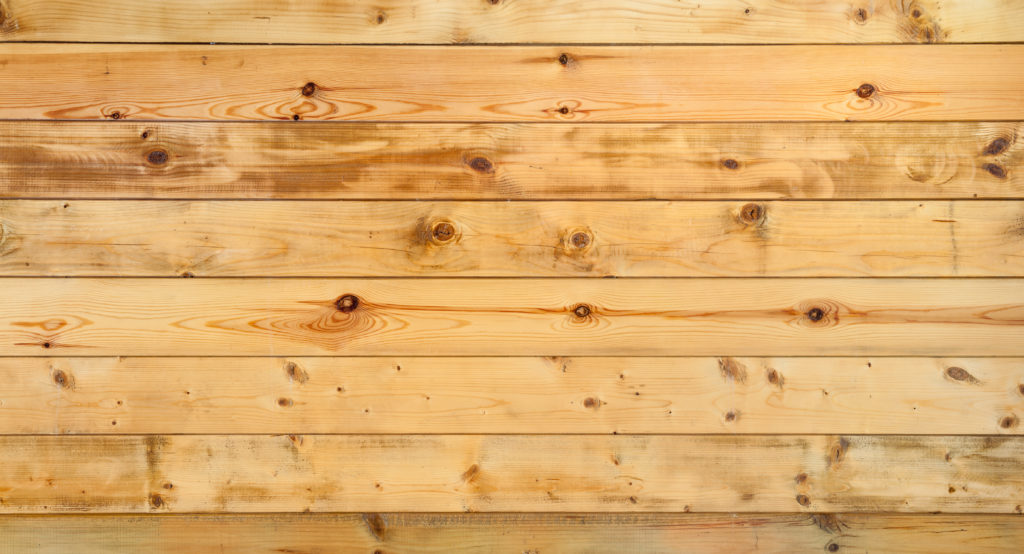
While pine flooring is technically a softwood rather than a hardwood, it’s still one of the most popular types of wood flooring around. And when you experience its knotty grain and rustic vibes, it’s easy to see why.
Fun fact: the hardwood vs. softwood designation actually comes down to whether a tree is coniferous or deciduous—not whether its wood is harder or softer on the Janka scale. In fact, heart pine boasts a Janka rating of 1225, which is higher than many popular “hardwood” species.
If you’re looking for wood flooring types that are local, renewable, and beautiful, look into some pine flooring pros and cons—they may surprise you.
Cork flooring
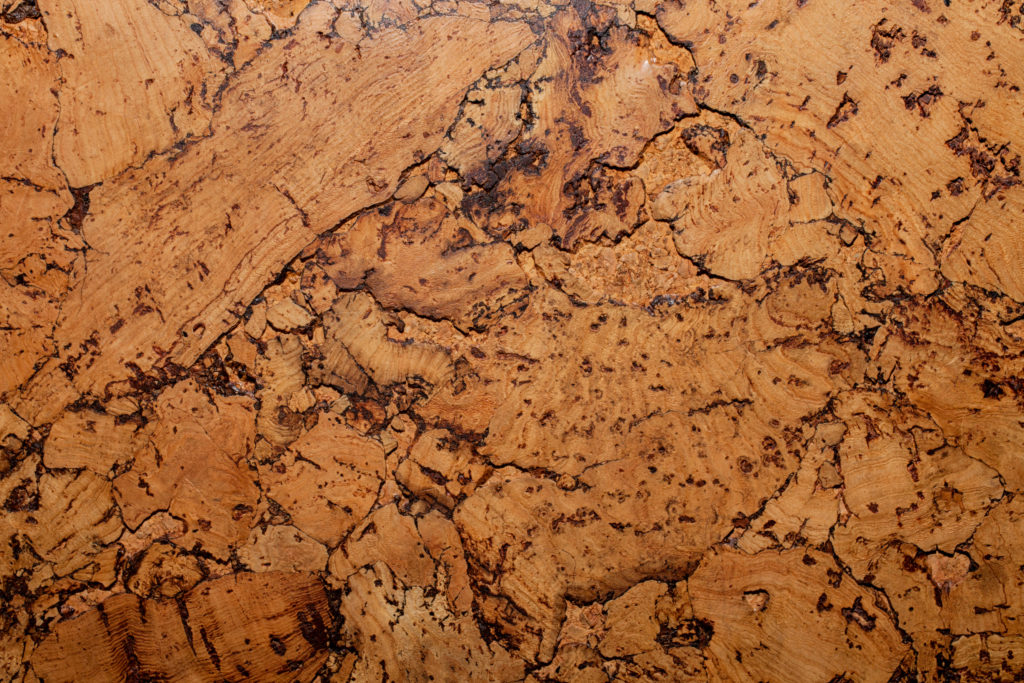
Cultivated from tree bark (rather than wood), cork flooring is one of the most sustainable flooring options around. Soft and comfortable underfoot, it also has great insulation and acoustic properties. Plus, it’s great for people with joint issues because it’s so springy. And all of the best cork flooring products are anti-microbial—AKA perfect for people with allergies.
That said, there are both pros and cons of cork flooring, and we’d be remiss if we didn’t mention both sides of the coin.
Most of the disadvantages of cork flooring boil down to the material’s softness. Namely, it’s more susceptible to denting and scratching. It’s also susceptible to moisture and humidity, which can cause warping or curling in certain climates. And that susceptibility means it also needs to be sealed more often than other types of wood flooring, which can be a hassle.
Pro tip: some of the cork flooring Lowe’s and Home Depot sells is not actually made of cork. Be careful buying from box stores!
Bamboo flooring
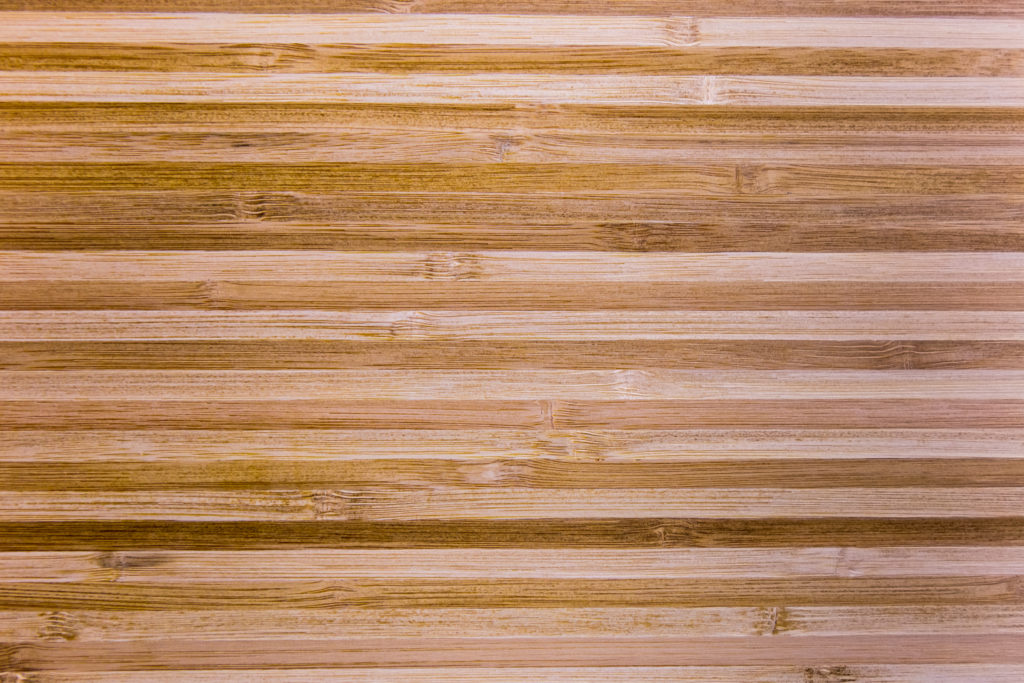
If you’ve ever had bamboo in your yard, you’ll know that it can grow to maturity in as little as three to five years—and that it’s basically impossible to get rid of. And while those qualities make it a gardener’s nightmare, they also make it an amazingly eco-friendly building material.
Additionally, depending on how it’s manufactured, the best bamboo flooring can be as hard and durable as oak, with Janka ratings between 1600 and 1900. And strand-woven bamboo floors can have Janka ratings of 3000 or higher. That is seriously strong!
While it’s technically a grass (weird, right?) bamboo is purchased, finished, and installed in the exact same way as any other types of wood flooring. You can even refinish bamboo flooring, if you’re so inclined.
Part III: Hardwood Flooring Cut Patterns
The angle at which wood is cut from the tree is one of the biggest factors in determining its final grain pattern. So when you’re thinking about how different types of wood flooring are going to look in your home, you should be thinking about both species and cut.
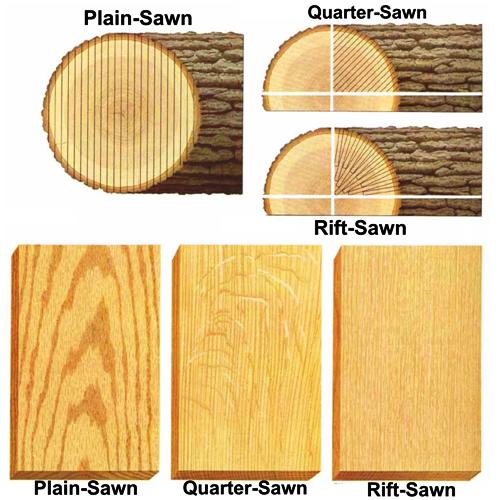
Here’s a quick guide to the most popular hardwood flooring cut patterns.
Plain / Flat sawn
This cut is exactly what it sounds like—a plain, flat, straight cut perpendicular to the growth rings of the tree. Because it goes vertically through the tree’s rings, it produces a wavy, varied grain. It’s by far the most common type of cut.
Quarter sawn
Quarter sawn logs are first cut into quarters, then sliced across the grain. Hard to visualize, we know—the important thing to know is that this cut produces uniform graining, a flecked appearance, and a stable grain that’s less prone to warping.
Rift sawn
A rift sawn tree is cut like a pie before being sliced into strips or planks—which results in straight grains that look similar to quarter sawn, but without the flecks.
Live sawn
Live sawn planks are just perpendicular slices through a tree going bottom-to-top. That means live sawn boards are often the widest of the four and have the most visible natural variation.
What to remember when choosing cut patterns
As we mentioned above, these cut patterns used to be most important when choosing solid hardwood flooring.
However, it’s becoming more and more common to find different cut patterns in engineered hardwood as well. It depends entirely on the manufacturer. Some of the best engineered wood flooring brands are starting to offer different cut patterns that were formerly available only in solid types of wood flooring.
Part IV: Types of Wood Flooring Finishes & Patterns
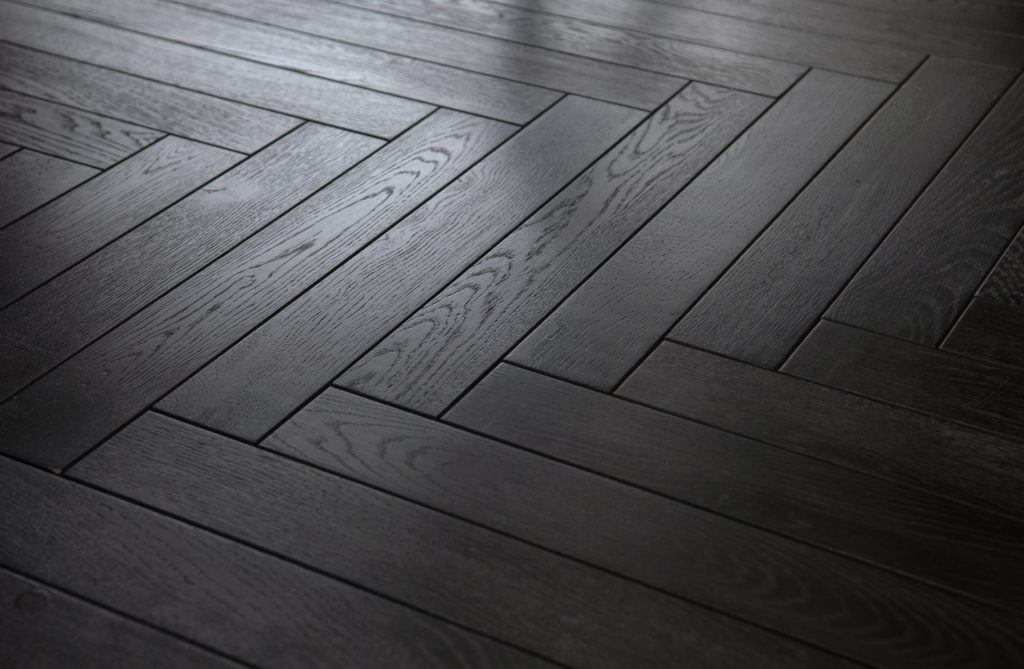
These days, most of the hardwood available at retail (especially engineered hardwood) comes prefinished. Of course, you can also buy unfinished hardwood and have your installer sand and finish it once it’s in place—but trust us, this is a massive pain (unless you like having wood dust on just about everything you own).
Types of Wood Flooring Finishes
Regardless of whether you choose prefinished or unfinished hardwood, though, you’ve got tons of options when it comes to the finish itself. Here are the most common.
- Water-based polyurethane: This is one of the most commonly-used finishes these days—and for good reason. It’s available in a huge variety of gloss levels, it goes on clear, it dries quickly, and it has relatively little odor.
- Oil-based polyurethane: Oil-based poly finish is (predictably) a thicker product than its water-based cousin. That means it needs fewer coats and it gives wood a beautiful amber finish. However: it takes a long time to dry and it’s definitely not low-odor.
- Aluminum oxide: Aluminum oxide is a naturally-occurring chemical that’s added to finishes for protection against scratches, dents, and UV fading. It’s really common in prefinished flooring, and we’d recommend asking to make sure it’s included in whatever finish you buy. Again: if your floor has a PU/AO finish, you’re probably never going to need to refinish it.
- Natural oils: Always a popular option, natural oils like linseed and tung soak into wood and dry to a hard finish. These can make for a beautiful, rustic look—and they offer a surprising amount of protection, too. They do have to be refinished more often, though.
- Hardwax: An increasingly popular product, hardwax is a mix of natural oils and waxes. Like natural oil, it dries to a hard finish.
So which finish should you go with? Totally up to you. If you have specific questions about finishes, though, your best bet is to find a local flooring expert in your area and ask them.
Wood Floor Patterns and Designs
Along with your finish, cut pattern, species, etc. (woof, we’re getting tired just reading this) you also need to choose your wood floor pattern. Also called parquet, the pattern in which you install your wood will have a huge effect on its appearance.
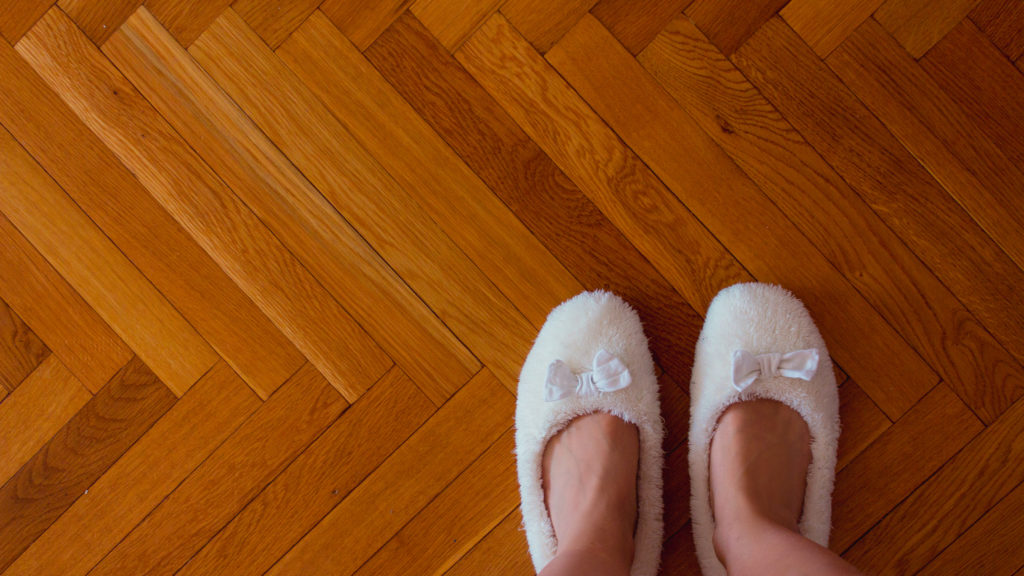
Some of the most popular wood floor designs are:
- Herringbone Parquet: This posh pattern has been around since Roman times, and you might recognize it from every fancy building you’ve ever been in. It’s gorgeous, it’s timeless, and it’s classy. Need we say more?
- Chevron Parquet: Sometimes mistaken for herringbone, chevron parquet is a bit of a modern take on the classic. Just remember: while herringbone can be achieved with standard rectangular wood planks, chevron planks need to be cut to shape.
- Mixed-Width: Mixed-width patterns are extremely popular right now. But trendy doesn’t mean bad—in fact, these floors look classic and modern at the same time.
- Horizontal / Diagonal Strip: When we talk about “horizontal strip” designs, we’re talking about the basic way 99% of people install hardwood planks. Diagonal strip is installed the same way—but oriented towards the corner of a room, rather than the top, bottom, or sides. This gives the illusion of open space, and is great for opening up small rooms.
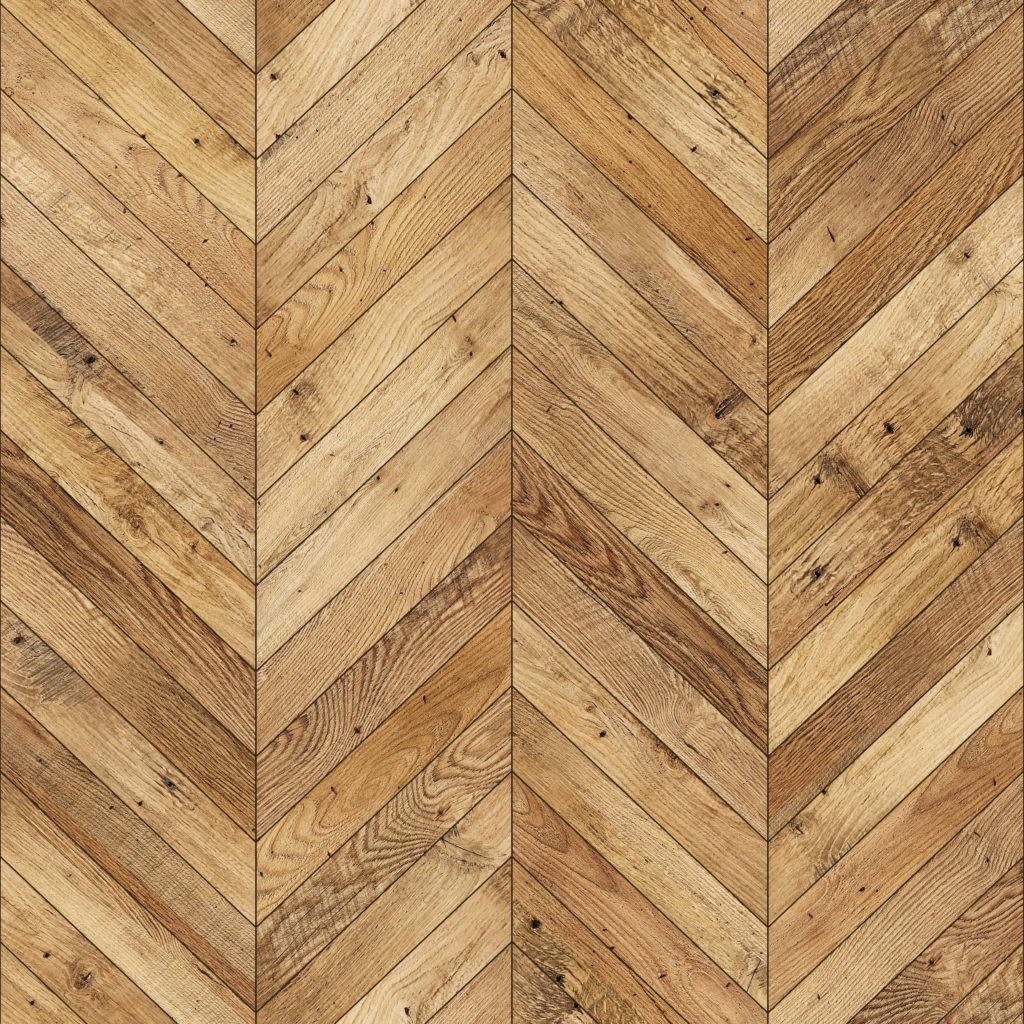
So What Are the Best Types of Hardwood Flooring?
At the end of the day, the best hardwood floors are… entirely up to you. Anticlimactic, we know!
But in all seriousness, everyone has unique needs when it comes to their floors. The best wood flooring types are simply the ones that work best for your situation.
We hope this guide to different types of wood flooring has been helpful! Now, the only thing that remains is to find a top-rated flooring store in your area. They can help you find the perfect types of flooring for you.
Or, if you want to see how hardwood stacks up to different flooring options, check out the links below.
And as always, if you have any questions whatsoever, please don’t hesitate to contact us. Our experts can help you out with any questions you have!
Either way, thanks for reading and good luck on your flooring journey!
- Comparing Tile vs. Wood Floors for Your Home
- Laminate vs. Hardwood Floors: Which are Better?
- Carpet or Hardwood in Bedrooms: Which is Better?
- A Guide to Peel-and-Stick Carpet Tiles (& 9 Reasons They’re Amazing)
- How Much Does it Cost to Replace Carpet With Hardwood?
- 20+ Types of Floor Tiles: Your 2022 Guide
- Linoleum vs. Laminate vs. Vinyl: Differences, Pros, & Cons
About The Author

Samuel Greenberg
October 11, 2019
Associate Director of Content Marketing at FlooringStores (and its parent company, Broadlume), Samuel is a former travel writer, English teacher, and semi-professional trivia host. When he’s not creating content, he can be found doing crosswords, drinking coffee, and petting the office dogs.
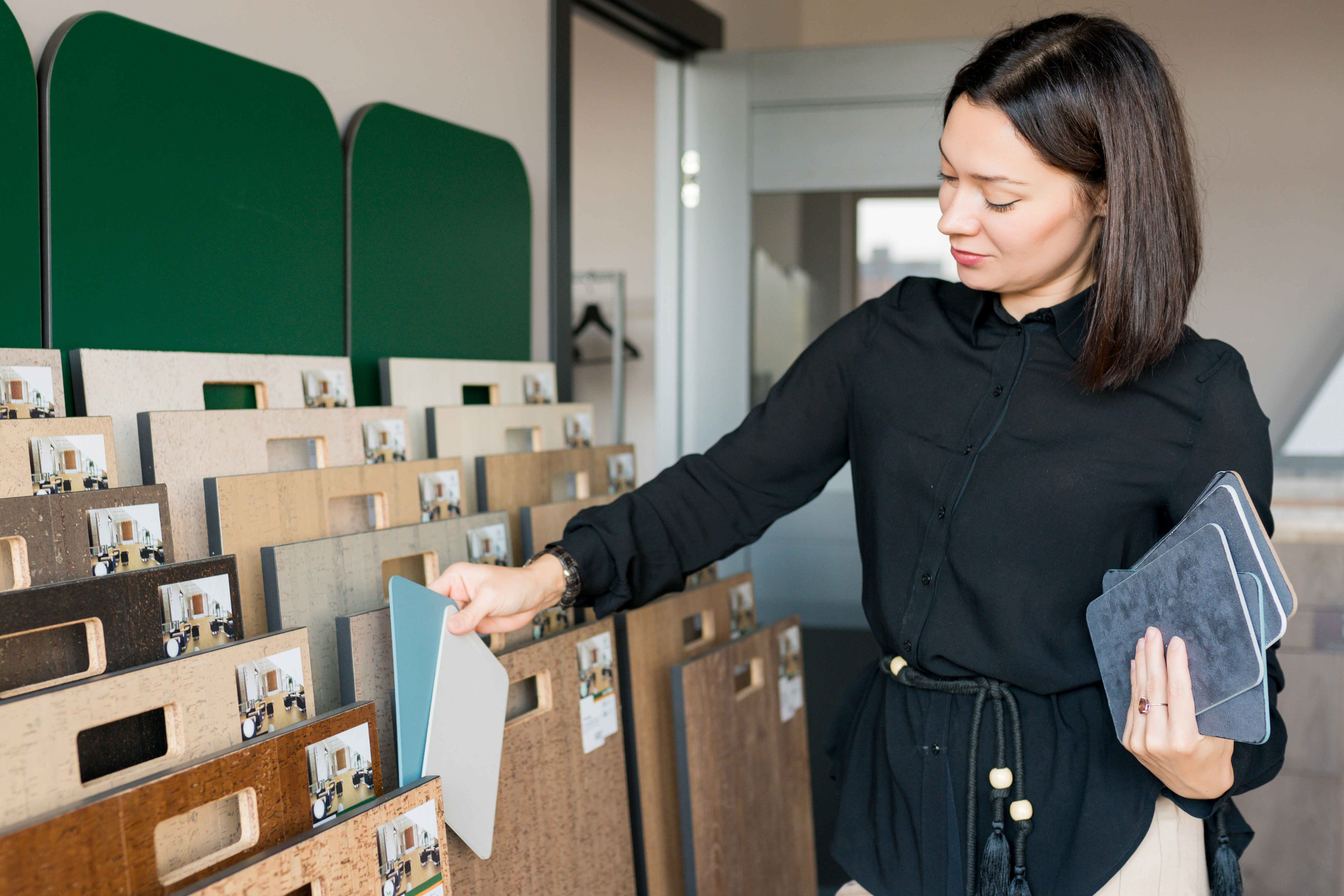
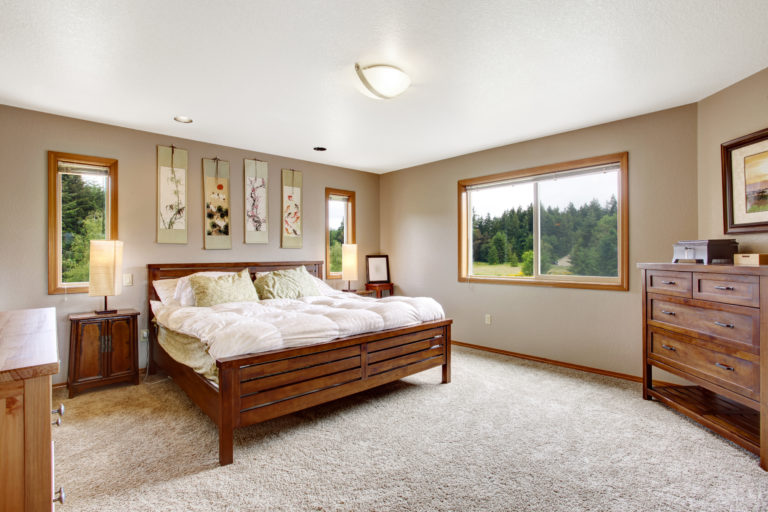

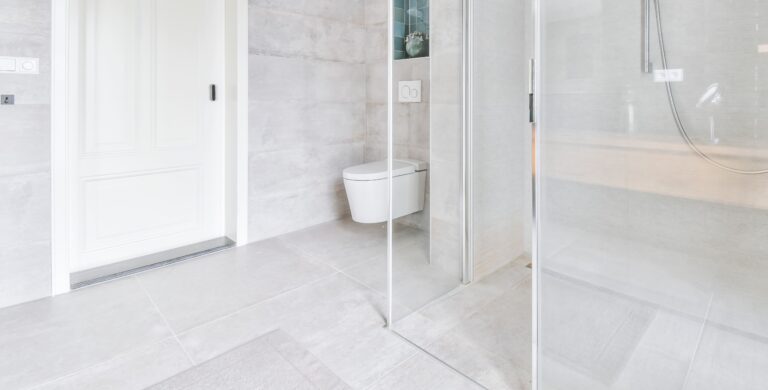

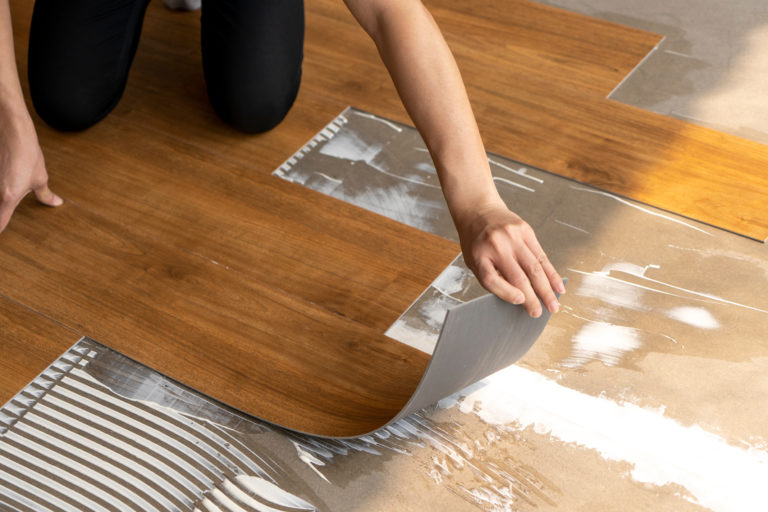
16 comments
USVintageWood
It’s nice reading this again. A great guide, indeed!
Choice Hardwoods,MN
Just read this article and I can say these are awesome great tips on how to take care of your Choice Hardwoods. I will be using this tips for my own clients so that there Choice Hardwoods in USA,MN go smoothly!
Michelle Catapang
I love this article and the pictures associated with the blog. Thank you for sharing your knowledge.
Vintage & Specialty Wood
My family used to love wood flooring, and I don’t blame them because I like the beauty it gives in our home. I like the character and benefits it provides in our home. Anyway, thanks for posting about wood flooring. I am a big fan of woods. Great post!
Michelle Catapang
Thank you for this information! Thank you for sharing your ideas!
Ella Mora
I have been having a hard time deciding on the type of flooring I would go with. But after reading this blog, I now have clarity on what I want to choose. Great article! Thank you for sharing.
Bo Arnold
Thanks Ella—let us know how you like your new floor!
Mike
I am thinking about replacing some of my carpets in the office and front room with hardwood flooring and want to know that how much costs for wood flooring. Thanks for sharing this blog.
Samuel Greenberg
Hi Mike,
Thanks for reading and great question! Check out this article for tons of info on the cost to replace carpet with hardwood. And for some personalized help, please don’t hesitate to message our team of flooring experts! They’ll help you with every stage of the floor-buying journey so you get the perfect wood floors for your office and front room.
Thanks so much for reading and commenting, and please let us know how your flooring project goes!
–Samuel
Afton Jackson
I love how you displayed the unique design and personality of hickory hardwood flooring. This kind of flooring lines up well with my idea of making a very classy and luxury-style wooden cabin house as my main place to stay and would go great with the rest of my plans. If I can find a wood flooring contractor in my area, I’ll make sure I ask about this type of flooring from them.
Samuel Greenberg
Hi Afton,
So happy you enjoyed this article and we couldn’t agree more—the aesthetics of luxury wood cabins line up perfectly with hickory hardwood flooring. If you love the look of hickory, check out these pieces on the pros and cons of hickory flooring and the advantages & disadvantages of hickory vs. oak flooring.
Thanks again for reading and let us know what you think!
Angel Burke
Thanks for sharing such relevant information about wood flooring types.
Jenna Hunter
My cousin is thinking about replacing some of his carpet in the office and front room with hardwood so that it will be easier for him to clean up from messes and pets. He really wants to get them done by a professional so that he will be able to have a cleaner home. I liked what you said about how the amount of force that it takes to push a steel ball halfway through wood is how to measure how hardwood is and is then rated on the Janka scale.
Samuel Greenberg
Hi Jenna,
Thanks so much for reading! Your cousin is absolutely right—hardwood is definitely going to be easier to clean. That said, has your cousin thought about installing a vinyl product? When it comes to durability and ease of cleaning, vinyl plank can’t be beaten. Also: isn’t the Janka scale so interesting? I’d love to see them do the test in person.
Thanks again for sharing!
–Samuel
Ronald Cunha
Thank you for the article, Samuel
What is better for a living room – solid hardwood or engineered wood floors? I’ve been looking for solid hardwood, but I am starting to think the wide plank I want doesn’t exist in solid.
Thanks,
Joseph
Samuel Greenberg
Hi Joseph,
Thanks for reading and great question! Unfortunately (and I know this is incredibly unhelpful), I would say that it really comes down to choosing which qualities of a new floor are most important to you. For example, if you’re looking exclusively for wide plank, you’re most going to have more options with engineered. And that’s not a bad thing at all—there are tons of amazing engineered products out there! But of course, if longevity is the more important quality for you, you might want to think about compromising on the plank width, since engineered can only be refinished a finite number of times (and occasionally not at all). Luckily, living rooms are comparatively low-traffic (as opposed to hallways, for instance), so that might not be as big of a consideration.
Anyway, thanks so much again for reading and sorry I couldn’t be more help. Good luck with your flooring search and let us know what you end up choosing!
–Samuel